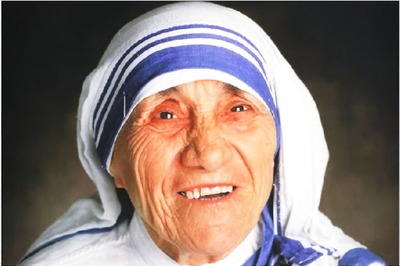
views
Bengaluru: It is probably one of the most horrifying years for Karnataka as more than half of the state is witnessing a drought-like situation and in many parts, people are craving for drinking water.
The state government has, so far, declared 3,122 regions to be the highly affected by drinking water scarcity and this number is only increasing.
Reservoirs in the state are draining out and underwater level is also decreasing resulting in water scarcity.
According to the Department of Rural Development and Panchayat Raj, of the 176 taluks, 138 have groundwater at a low level. The worst of these are Bagepalli, Chikkaballapura, Sidlaghatta, Bangarpet and Kolar.
According to an official from the department, groundwater level in Kolar and Chikkaballapura districts is going low by the day.
“In parts of these districts, water level is 55 to 60m below ground level. Borewells have dried up and there is no future resources for new borewells either,” the official added.
The former president of Kolar Zilla Panchayat, Shivappa, told News18, “Ten years ago, we used to find water sources in borewells by digging 150ft into the ground. About five years ago, this went down to 350ft and now, it has crossed 600ft into the ground.”
Last year, Kodagu and Chikkamagaluru districts witnessed excess rainfall resulting floods. One wonders where does all this water go.
An official from department said excess rainfall was equal to less rainfall. “Excess rain leads to soil erosion and the water do not get absorbed into the ground. This is what happened last monsoon in Kodagu, Chikkamagaluru and coastal parts of the state,” the official said.
Recently Mangaluru City Corporation issued a notice to all residents that water rationing would begin shortly and the civic body would not supply water June 1.
A good monsoon is the only hope to rejuvenate the drying reservoirs and bring up the groundwater levels.
However, according to the meteorological department, monsoon is likely to enter Karnataka only after June 8. It has also predicted an average low rainfall.
The state has 13 major reservoirs, namely Supa, Narayanapura, Bhadra, Linganamakki, Varahi, Almatti, KRS, Harangi, hemavathi, Ghataprabha, Malaprabha and Tungabhadra.
Water level at all these reservoirs has hit a record low, according to the Karnataka State Natural Disaster Monitoring Centre.

The above data, released by KSNDMC on its official website shows scarcity of water inflow at all the major reservoirs.
Only 1,55 thousand million cubic feet of live storage is left in these reservoirs which is only 18.8% of the total storage capacity of 825 tmcft.
Hemavathi reservoir in Hassan district, Koppal’s Tungabhadra, Belagavi’s Ghataprabha and Malaprabha are the worst hit.
Dams on Cauvery basin are also facing similar scarcity, but the situation is comparatively better there.
The Krishna Raja Sagara dam has 16% of the total storage capacity, while Kabini has 22%, Harangi (15%) and Hemavathi (10%).
Bengaluru, Mysore and Mandya depend on the Krishna Raja Sagara dam for its drinking water needs and the KSNDMC doesn’t predict any problem here.
According to the KSNDMC report, water flow has stopped in all major rivers in the coastal belt including Netravathi, Phalguni, Swarna, Chakra, Varahi, Sharavathi, Aghanashini and Kali.
Groundwater levels have exhausted and have reached 30-40m below ground level in Mangaluru.
Water level has reached the dead-storage limit in the Baje dam across the Swarna river, which is the main source of water for Udupi.
North Karnataka is pinning hope on Maharashtra water. If monsoon arrives early, the northern Karnataka districts will expect release of water from Maharashtra.




















Comments
0 comment